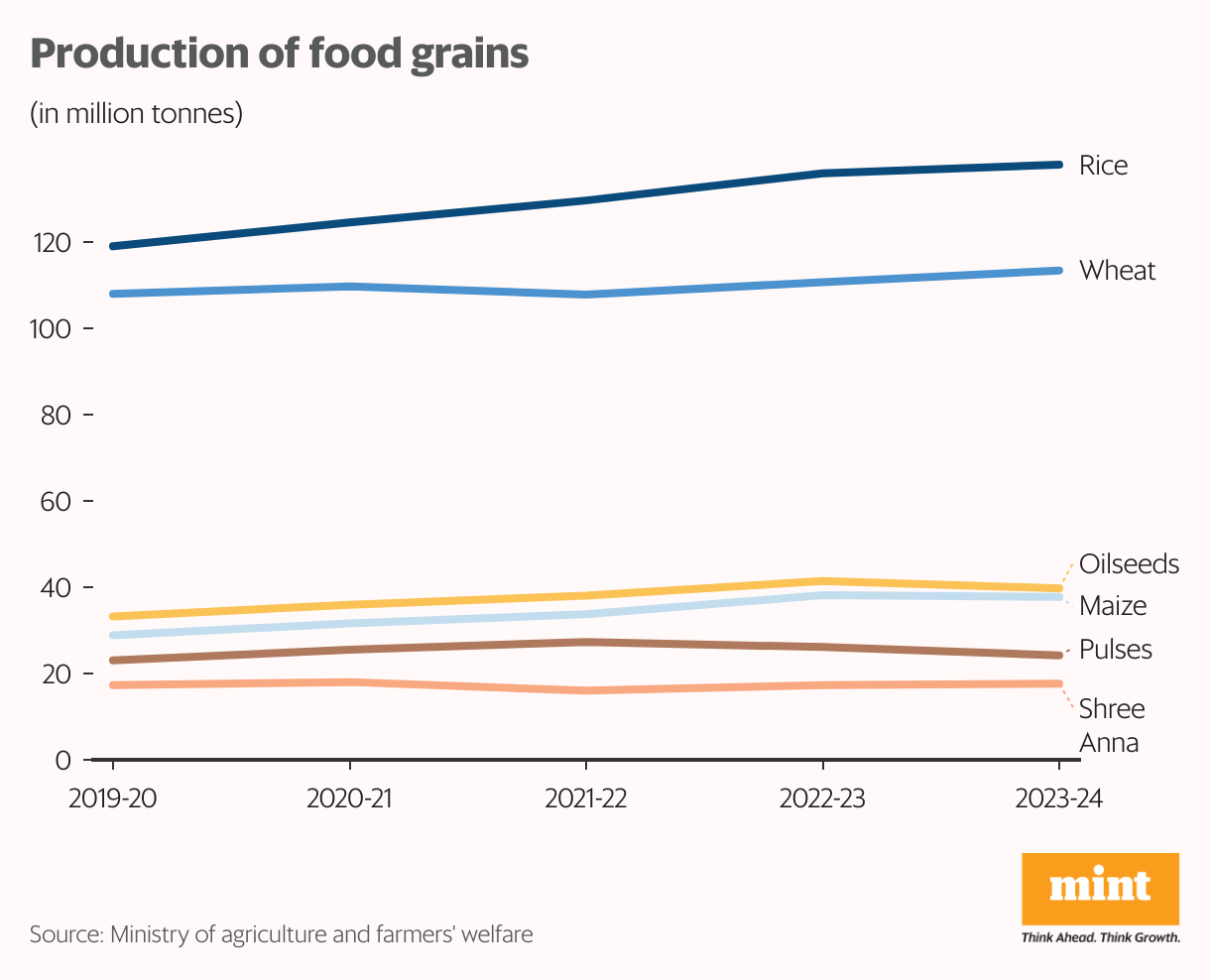Our Terms & Conditions | Our Privacy Policy
India’s farm sector grapples with falling yields to climate change
India’s agriculture sector, employing about 42.3% of the population and contributing 18.2% to the GDP, is a key driver of rural development and economic growth. But it faces challenges such as climate change, inconsistent crop yields, and lack of adequate modernization. As a result, the agriculture industry will closely monitor the upcoming Union Budget for FY26.
The agriculture budget has seen a 379% surge over the past decade, from ₹27,662.67 crore in 2013-14 to ₹1,32,469.86 crore in 2024-25. The upcoming budget is expected to include further allocations to encourage farmers to boost cotton production through the Bhawantar scheme, a pilot for which is already on. This reflects a larger shift towards supporting farmer income and addressing the sector’s growing needs.
Also see | Budget Bites: How much does the government allocate for agriculture?
As of now, the focus has primarily been on the production of agricultural goods, while agricultural marketing has received comparatively less attention. However, effective marketing is crucial to promote agricultural products and ultimately increase farmers’ income. The upcoming budget is expected to include proposals related to agricultural marketing, which could play a key role in addressing this gap and supporting the growth of the sector.
With the future of agriculture lying in digital transformation, the industry’s demands for the 2025-26 budget include the expansion of digital agriculture. This could revolutionize farming by providing data-driven insights for better crop management. The industry is also advocating a stronger focus on water management, given the growing challenges of water scarcity in many regions.
Also read | Govt plans to introduce new agriculture export policy

The agriculture sector is also looking for public-private partnerships to support the growth of the seeds export industry and the creation of research-linked incentives to boost innovation and competitiveness.
The industry has sought a comprehensive framework for warehousing infrastructure, aimed at reducing food grain wastage and improving storage facilities at the grassroots level. Moreover, the development of a national cold supply chain for perishables, including dairy and meat, is seen as essential to boosting agricultural exports.
Also read | Fertilizer subsidy allocation likely to stay steady in FY26 budget
India ranked the world’s eighth-largest agricultural exporter in 2023 despite a decline in exports from $51.12 billion in FY23 to $48.77 billion in FY24, primarily due to restrictions on rice and wheat exports implemented for domestic food security reasons.

There is a push to increase coverage of artificial insemination and enhanced support for the dairy sector, which plays a pivotal role in farmers’ incomes. Strengthening animal health initiatives and foot and mouth disease and other such ailments is also essential for the sector’s growth.
Images are for reference only.Images and contents gathered automatic from google or 3rd party sources.All rights on the images and contents are with their legal original owners.



Comments are closed.